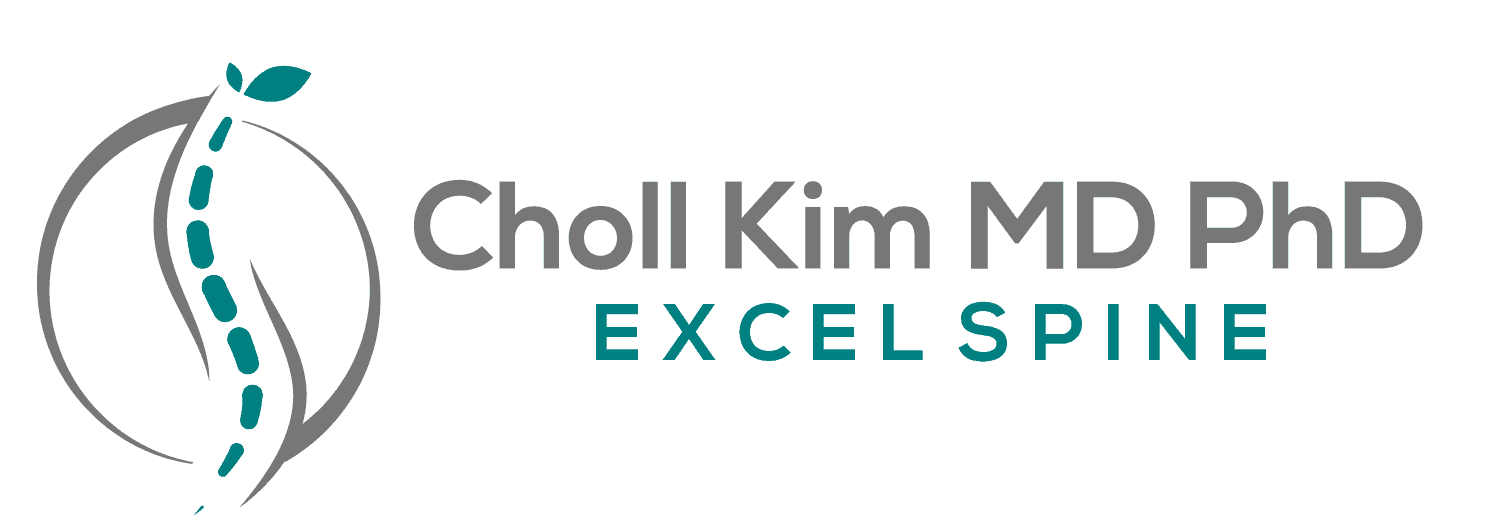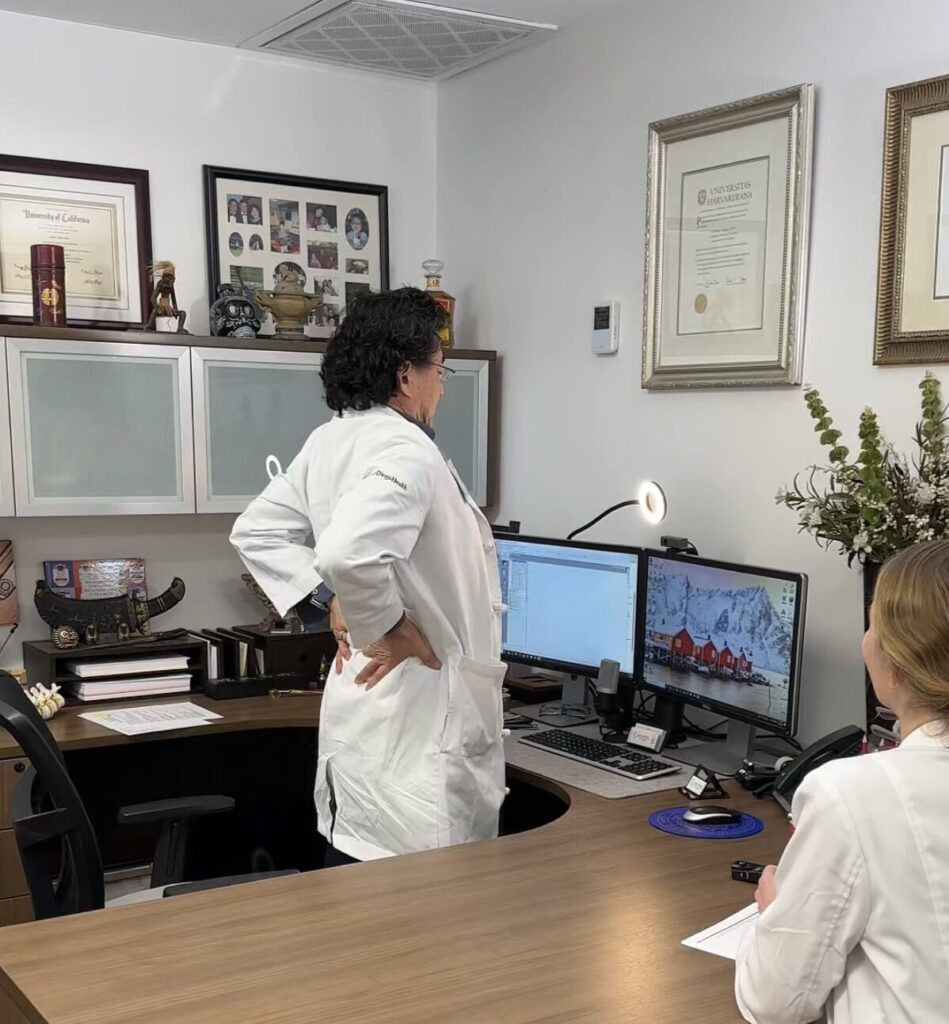
Did you know that back pain affects approximately 80% of people at some point in their lives, making it one of the leading causes of missed work and daily discomfort? Now is the perfect time to prioritize your spine health. To celebrate the season, we’ve shared 12 days of spine-saving tips, designed to keep your back in tip-top shape as you navigate daily activities, travel, celebrate and start the new year. Each tip includes a link to a short video demonstration—check them out and take the steps toward better spine health!
Day 1: Take Movement Breaks
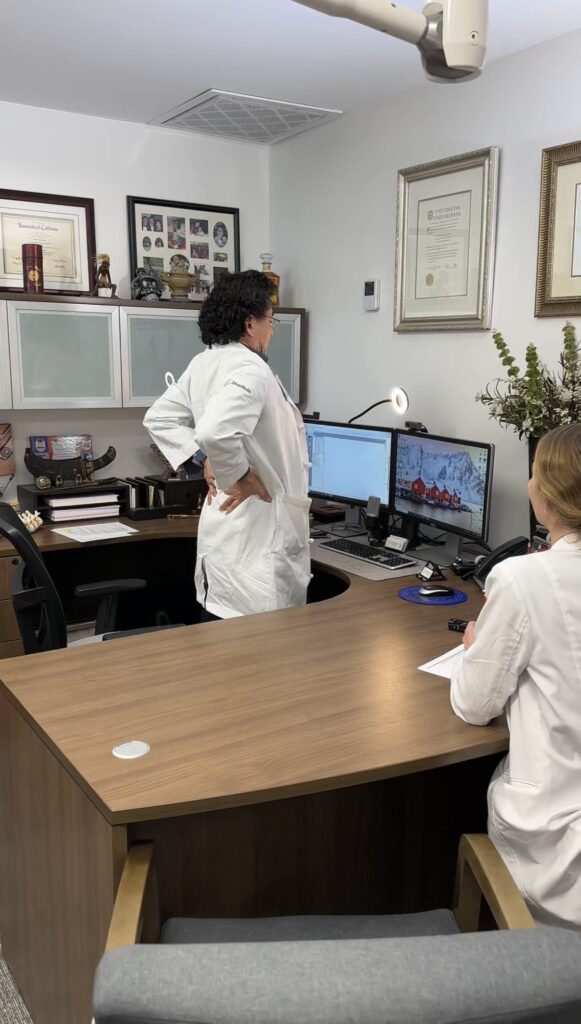
Sitting for long periods increases the pressure on your spinal discs, which can lead to discomfort and stiffness over time. This position also encourages poor posture, which strains the muscles supporting your spine and can compress nerves like the sciatic nerve. Taking regular movement breaks helps restore circulation, reduce muscle fatigue, and prevent joint stiffness. Aim for at least a 2–5 minute break every 30–45 minutes to stretch, stand, or walk. Incorporating these breaks into your routine improves spinal alignment and helps prevent long-term complications like chronic back pain.
Day 2: Watch Your Posture
Good posture isn’t just about appearances—it’s essential for spine health. Poor posture can shift the natural alignment of your spine, leading to uneven pressure on the vertebrae and discs. This can accelerate wear and tear, increasing the risk of conditions like herniated discs, muscle imbalances, and chronic pain. Avoid slouching, whether you’re working at a desk or standing in line, maintaining proper posture can make a big difference in your spinal health over time. Sit with your feet flat on the floor, shoulders relaxed, and back supported. Proper posture ensures even distribution of spinal pressure, reducing long-term strain.
See tips for maintaining good posture here!
Day 3: Practice Proper Lifting Techniques
Improper lifting can strain your back and lead to injury. To lift safely, bend your knees, keep your back straight, and hold the item close to your body. Avoid twisting your torso while lifting, and if an item is too heavy, ask for help. Proper lifting techniques distribute weight more evenly, reducing the risk of injury to your spine.
Learn proper lifting techniques here!
Day 4: Stretch Regularly
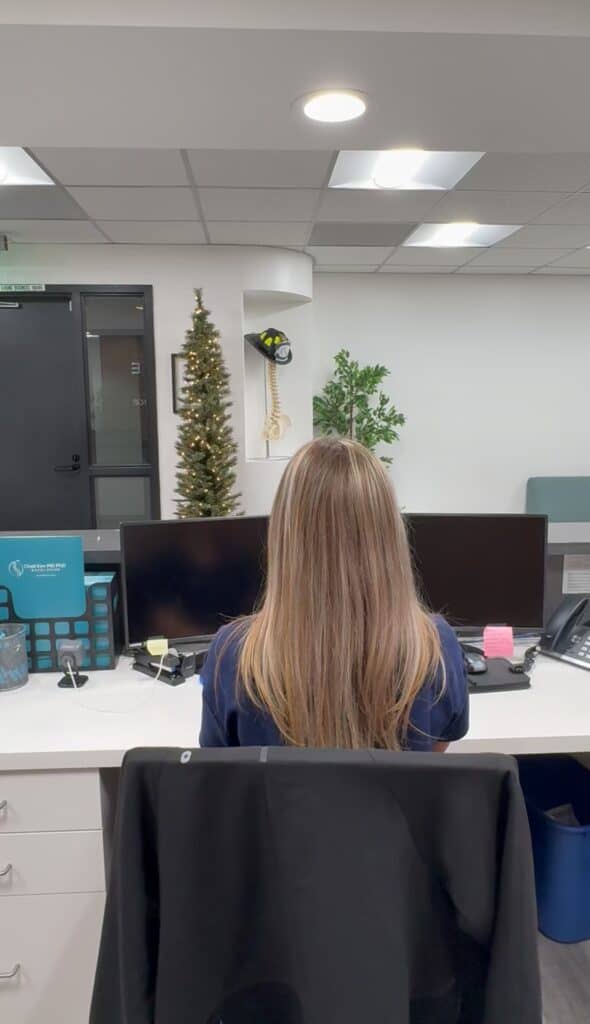
Stretching throughout the day keeps the muscles supporting your spine flexible and reduces tension in the shoulders, neck, and lower back. Regular stretching also increases blood flow to the spinal tissues, delivering nutrients and oxygen needed for healing and maintenance. For those with sedentary jobs or physically demanding routines, stretches can help counteract the negative effects of prolonged sitting or repetitive movements. Focus on dynamic stretches like side bends or spinal twists to maintain mobility and static stretches like Child’s Pose for relaxation.
Day 5: Stay Hydrated
Your spinal discs, which cushion the vertebrae, are made up of about 80% water. Dehydration can cause these discs to lose their elasticity and height, reducing their ability to absorb shock and increasing the risk of disc degeneration. Proper hydration also supports the surrounding muscles and ligaments, keeping them supple and reducing the likelihood of cramps or injuries. Aim to drink at least 8 glasses of water daily, and adjust for increased activity or dry environments. Consistent hydration promotes overall spinal health and keeps your back feeling its best.
Watch why hydration matters for your spine here!
Day 6: Strengthen Your Core
Your core is the world’s greatest back brace, providing natural stability and protection for your spine. A strong core acts as a built-in support system, reducing strain on your back, maintaining proper posture, and helping to prevent injuries. By engaging in exercises like planks, bird dogs, and bridges, you can strengthen these essential muscles and ensure your spine has the support it needs for daily activities. This holiday season, give your spine the ultimate gift—a strong, resilient core that keeps you moving and feeling your best!
Learn core-strengthening exercises here!
Day 7: Avoid Tech Neck
Proper positioning prevents excessive stress on the cervical spine, reducing the risk of chronic pain. Tech neck occurs when the head is tilted forward while using devices like phones or tablets, placing up to 60 pounds of additional pressure on your cervical spine. Over time, this posture can lead to muscle strain, headaches, and even long-term issues like disc herniation. Holding your device at eye level, keeping your shoulders relaxed, and taking frequent breaks to stretch your neck can alleviate this stress. Addressing tech neck early prevents chronic discomfort and maintains the natural curve of your cervical spine.
See how to prevent tech neck here!
Day 8: Get 8 Hours of Sleep
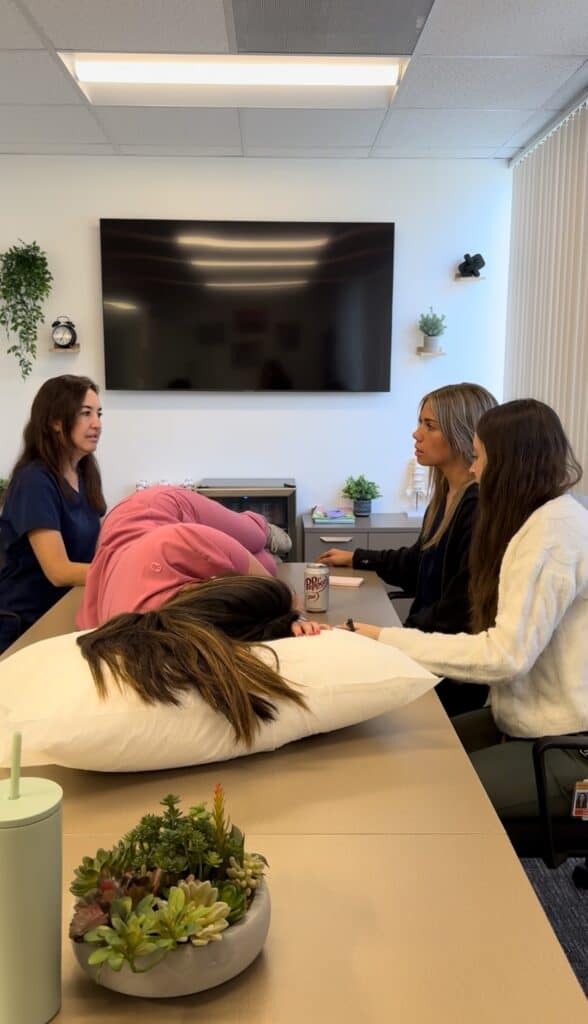
Getting a full 8 hours of sleep is essential for maintaining a healthy spine. During this time, your body goes into repair mode, allowing the muscles and ligaments that support your back to relax and recover. Sleep also helps replenish the fluid in your spinal discs, which acts as a cushion between your vertebrae, reducing wear and tear. Without sufficient rest, your spine doesn’t get the recovery time it needs, which can lead to stiffness, muscle tension, and chronic back pain. Prioritizing 8 hours of quality sleep each night gives your spine the support and restoration it needs to keep you moving comfortably throughout the day.
Day 9: Wear Proper Footwear
Footwear plays a critical role in spine health by affecting your gait and overall alignment. High heels or unsupportive shoes can shift your center of gravity, causing your lower back muscles to overcompensate and strain. Shoes with good arch support and cushioning reduce impact on your spine and promote even weight distribution. Opt for comfortable, well-fitted footwear during prolonged activities to minimize stress on your lower back and legs.
Watch why shoe choice matters here!
Day 10: Avoid Sitting for Too Long

Sitting for extended periods increases the pressure on the lumbar spine, leading to discomfort, stiffness, and weakened back muscles over time. Using a standing desk allows you to alternate between sitting and standing, reducing the strain on your spine and promoting better posture. Combined with taking hourly breaks to stretch and move, standing desks can help maintain spinal alignment, reduce muscle fatigue, and improve circulation. This dynamic approach prevents the long-term damage caused by prolonged sitting, supporting a healthier and more active lifestyle.
Day 11: Practice Stress Management
Stress triggers muscle tension, particularly in the shoulders, neck, and lower back, which can exacerbate existing spinal issues or create new ones. Relaxation techniques like deep breathing, meditation, or gentle yoga can reduce muscle tension, improve circulation, and promote better posture. Taking time to manage stress not only protects your spine but also enhances overall well-being, creating a healthier, happier body and mind.
Explore stress management techniques here!
Day 12: Recognize Back Pain Red Flags
Certain symptoms of back pain, such as severe pain that doesn’t improve with rest, numbness, tingling, or loss of bladder or bowel control, may indicate serious spinal issues. These can include nerve compression, herniated discs, or spinal infections. Recognizing these red flags early and seeking prompt medical attention can prevent the condition from worsening and improve treatment outcomes. Prioritizing professional evaluation ensures your spine health is managed effectively.
Learn about back pain red flags here!
Wrap-Up
As we close out this holiday season and begin the new year, let’s remember that a healthy spine is the ultimate gift you can give yourself. Your spine supports every move you make, and taking small, mindful steps now can lead to a pain-free and active life well into the future.
Whether it’s practicing proper posture, staying hydrated, or incorporating core-strengthening exercises, these 12 tips are designed to help you prioritize your spine health. Each small change adds up to long-term benefits, helping you move through the days without discomfort.
Start the new year with a commitment to your well-being. Check out our videos for quick information on each tip and make spinal health a priority in 2025.
From all of us, happy holidays and here’s to a healthy, joyful, and pain-free 2025! 🎄🎉
